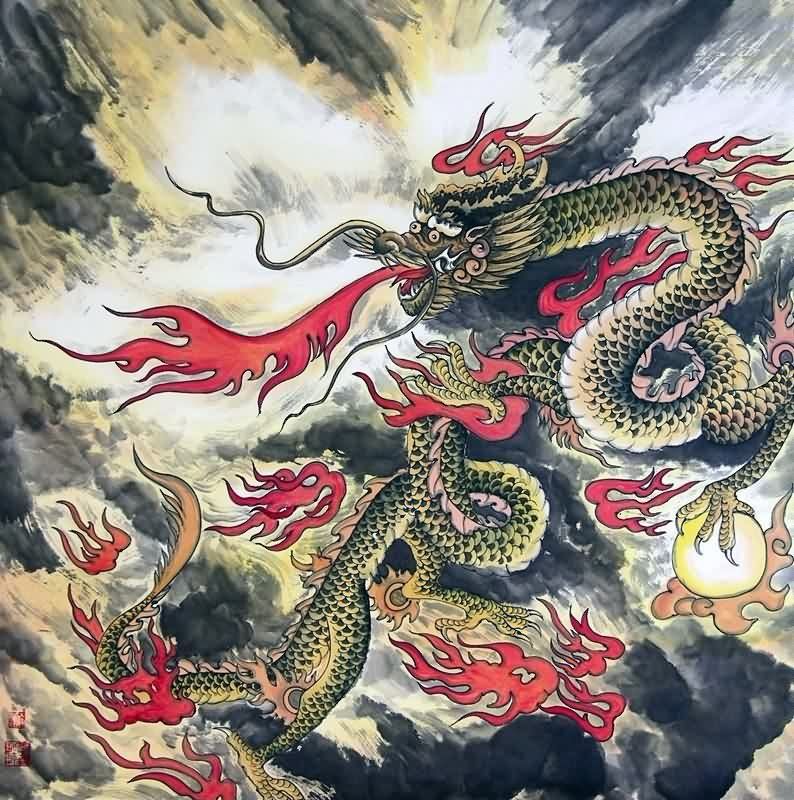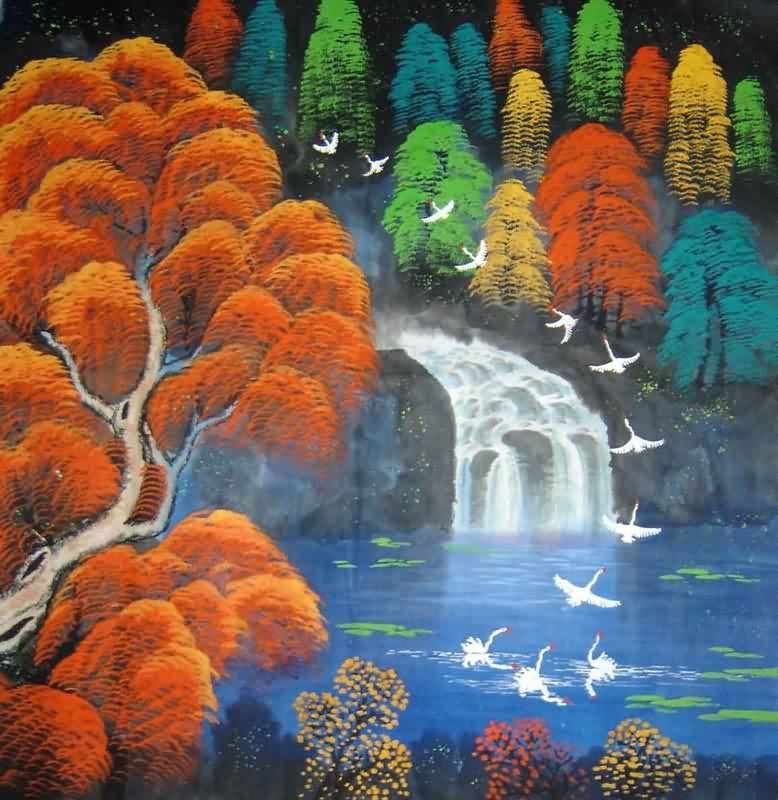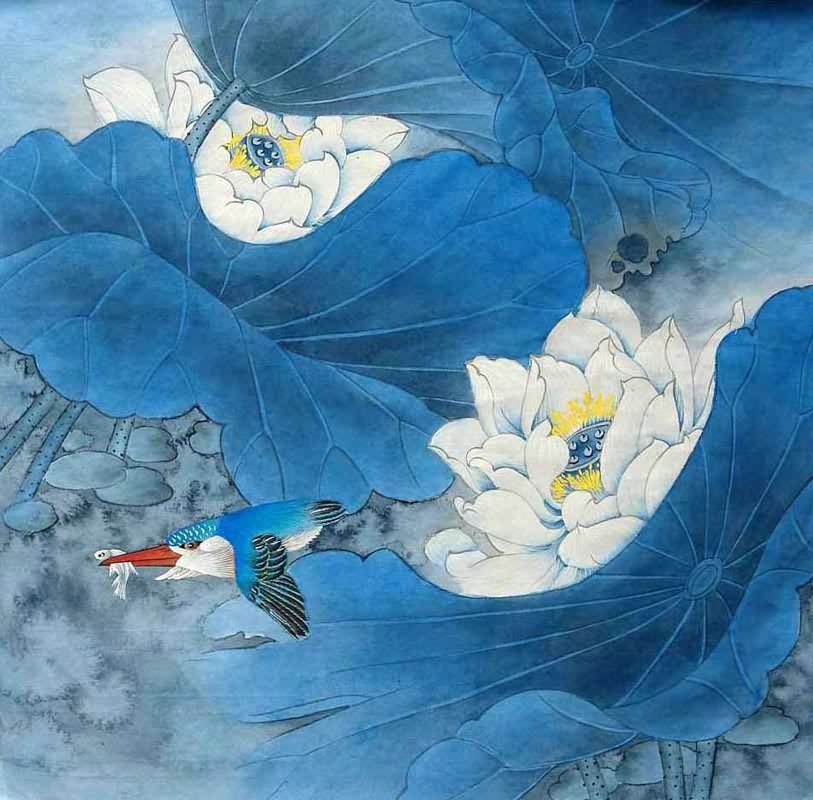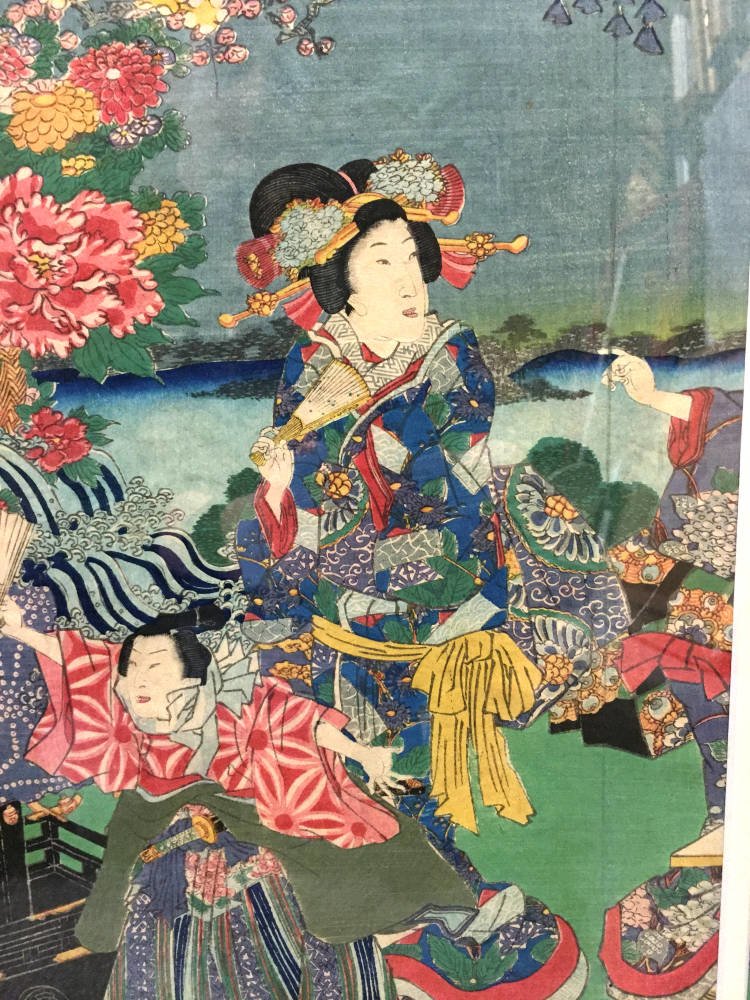Chinese Painting. The earliest paintings were ornamental, not representational, consisting of patterns or designs rather than pictures. The styles and traditions in figure, landscape, and bird-and-flower painting have formed themes that continue to blend to this day into a single piece of music.

This is the aim of the traditional Chinese painter: to capture not only the outer appearance of a subject but its inner essence as well—its energy, life force, spirit. It developed and was classified by theme into three genres: figures, landscapes, and birds-and-flowers. Chinese Painting Chinese painting is one of important oriental arts that reflect the Chinese nation's specific aesthetic standard.
The beauties, whatever the court ladies in garden or famous ancient China beauties, are created gracefully, delicately and vivid. Painters through the ages have made up this "orchestra," composing and performing many movements and variations within this tradition. Chinese painting is painted on rice paper or silk with a Chinese writing brush dipped in water, ink or color, it involves essentially the same techniques as calligraphy.
There are two main techniques in Chinese painting: Gongbi (工笔 /gong-bee/), literally 'working pen', is a meticulous style, rich in color and detailed brush strokes. Chinese Paintings - Wide selection of Room Dividers, Shoji Screens, Oriental and Asian Home Furnishings, Chinese Lamps and accessories at warehouse prices. Instead of being done on large, flat canvases, Chinese paintings were mostly created with large scrolls that were hung for display.
The ancient Chinese art of painting began on cave walls in the Neolithic period and later emerged as ink and wash painting during the Tang dynasty.
The tools used in traditional Chinese painting are paintbrush, ink, traditional paint and special paper or silk.
Note that Chinese painting is regarded as the oldest. Chinese painting, one of the major art forms produced in China over the centuries. The other arts of China are treated in separate articles.
This way of applying colors pursues the original colors of the objects, the change of light and shadow does not often appear. The styles and traditions in figure, landscape, and bird-and-flower painting have formed themes that continue to blend to this day into a single piece of music. There's great value for a collector in building a visual database of various examples.
However, because this handscroll narrates the story, the landscape serves as a mere stage for various scenes. This way of applying colors pursues the original colors of the objects, the change of light and shadow does not often appear. Painters through the ages have made up this "orchestra," composing and performing many movements and variations within this tradition.
In theory, this was an amateur art practiced by gentlemen, this style is also referred to as "xie yi" (寫意) or freehand style. Chinese art is most famous for landscape painting and some of the greatest landscape masterpieces have been painted by Chinese artists. It is often used for portraits or narrative subjects.
Chinese painting (simplified Chinese: 中国画; traditional Chinese: 中國畫; pinyin: Zhōngguó huà) is one of the oldest continuous artistic traditions in the world. E. and developing over a period of more than six thousand years. To accomplish his goal, the Chinese painter more often than not rejected the use of color.
Its colors most are from natural mineral materials and the animal shell.
Chinese painting is painted on rice paper or silk with a Chinese writing brush dipped in water, ink or color, it involves essentially the same techniques as calligraphy.
The beauties, whatever the court ladies in garden or famous ancient China beauties, are created gracefully, delicately and vivid. The traditional Chinese paintings are predominantly done on silk or paper, and the paintings point to the use of a variety of brushes, dyes, and inks. However, the varied styles, techniques, perspectives and symbolism of such paintings are often very different from most Western art works.
Chinese Painting Chinese painting is one of important oriental arts that reflect the Chinese nation's specific aesthetic standard. However, the varied styles, techniques, perspectives and symbolism of such paintings are often very different from most Western art works. In theory, this was an amateur art practiced by gentlemen, this style is also referred to as "xie yi" (寫意) or freehand style.
Chinese painting, also known as brush painting or ink-wash painting, is one of the oldest art forms in the world. To accomplish his goal, the Chinese painter more often than not rejected the use of color. It is often used for portraits or narrative subjects.
It consisted of paper, brushes, ink, and inkstone. It developed and was classified by theme into three genres: figures, landscapes, and birds-and-flowers. In theory, this was an amateur art practiced by gentlemen, this style is also referred to as "xie yi" (寫意) or freehand style.
This intricate ink drawing on silk teems with everyday life in a naturalist setting. Chinese painting is particular in applying colors. The subjects of these paintings also vary, but the most common ones cover landscapes, animals, portraits, insects, birds, and flowers.
They can bear all kinds of weather and not fade, and they are often applied to the picture levelly.
To accomplish his goal, the Chinese painter more often than not rejected the use of color.
Chinese Paintings - Wide selection of Room Dividers, Shoji Screens, Oriental and Asian Home Furnishings, Chinese Lamps and accessories at warehouse prices. This is the aim of the traditional Chinese painter: to capture not only the outer appearance of a subject but its inner essence as well—its energy, life force, spirit. The subjects of these paintings also vary, but the most common ones cover landscapes, animals, portraits, insects, birds, and flowers.
Chinese painting, also known as brush painting or ink-wash painting, is one of the oldest art forms in the world. These include Chinese calligraphy, which in China is closely associated with painting; interior design; tapestry; floral decoration; Chinese pottery; metalwork; enamelwork; and lacquerwork; as well as Chinese jade; silk; and Chinese architecture. The birds-and-flowers genre has its roots in the decorative patterns engraved on pottery and bronze ware by early artists.
The beauties, whatever the court ladies in garden or famous ancient China beauties, are created gracefully, delicately and vivid. Moreover, birds and dragons, inhabiting the painting, make the atmosphere dreamlike. This is the aim of the traditional Chinese painter: to capture not only the outer appearance of a subject but its inner essence as well—its energy, life force, spirit.
These include Chinese calligraphy, which in China is closely associated with painting; interior design; tapestry; floral decoration; Chinese pottery; metalwork; enamelwork; and lacquerwork; as well as Chinese jade; silk; and Chinese architecture.
Here, people and animals appear larger than simplified trees, clouds, and mountains.
This is the aim of the traditional Chinese painter: to capture not only the outer appearance of a subject but its inner essence as well—its energy, life force, spirit. The birds-and-flowers genre has its roots in the decorative patterns engraved on pottery and bronze ware by early artists. Chinese painting (simplified Chinese: 中国画; traditional Chinese: 中國畫; pinyin: Zhōngguó huà) is one of the oldest continuous artistic traditions in the world.
The earliest paintings were ornamental, not representational, consisting of patterns or designs rather than pictures. The other arts of China are treated in separate articles. Instead of being done on large, flat canvases, Chinese paintings were mostly created with large scrolls that were hung for display.
We hold dedicated live sales twice a year in Hong Kong and targeted single-owner sales in both Hong Kong and New York, as well as online sales throughout the year. Chinese Paintings - Wide selection of Room Dividers, Shoji Screens, Oriental and Asian Home Furnishings, Chinese Lamps and accessories at warehouse prices. E. and developing over a period of more than six thousand years.
We hold dedicated live sales twice a year in Hong Kong and targeted single-owner sales in both Hong Kong and New York, as well as online sales throughout the year. The subjects of these paintings also vary, but the most common ones cover landscapes, animals, portraits, insects, birds, and flowers. Chinese Painting Chinese painting is one of important oriental arts that reflect the Chinese nation's specific aesthetic standard.



/elderly-man-painting-traditional-chinese-calligraphy--521763326-5c53455746e0fb000164ca40.jpg)











